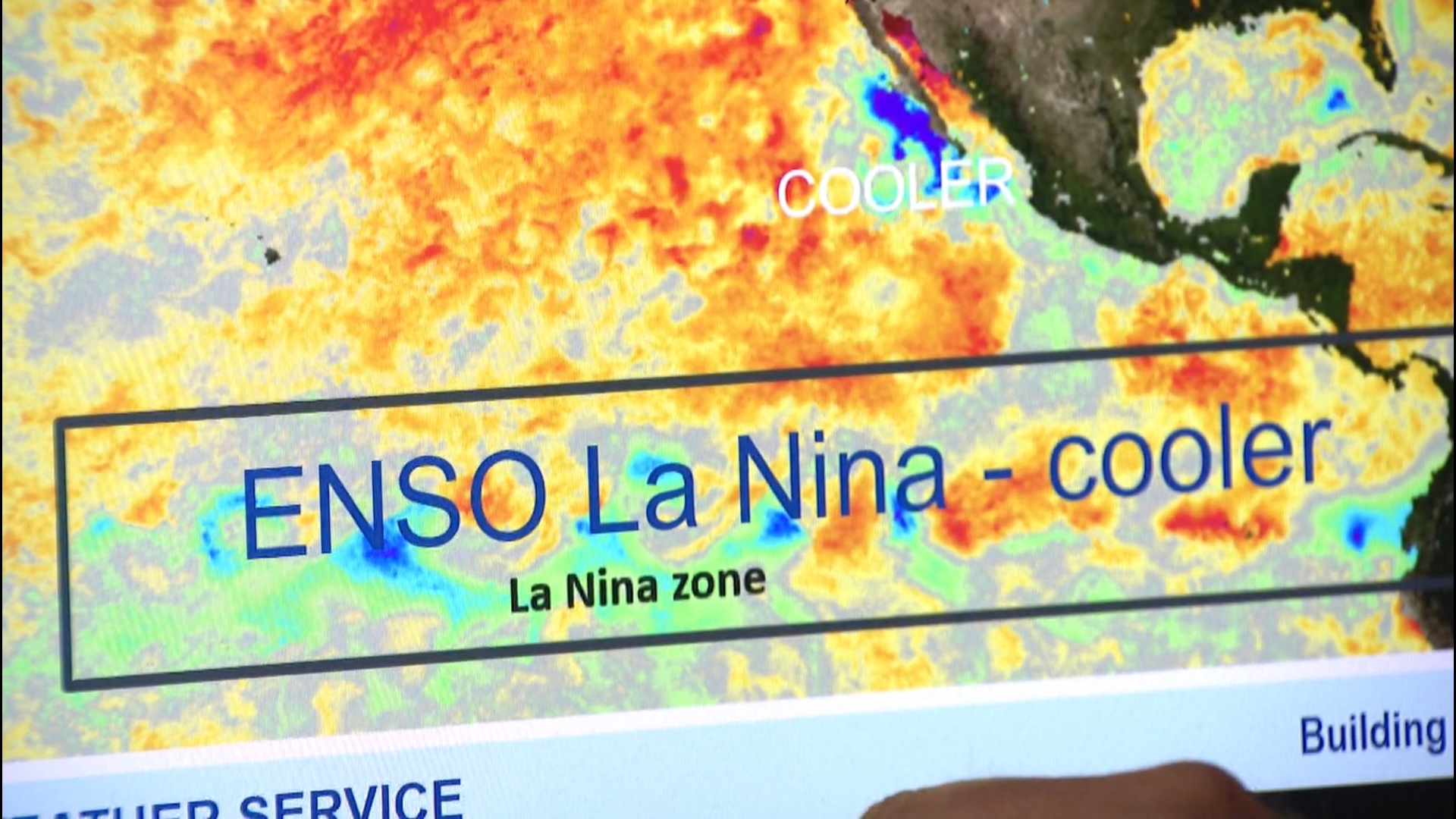SAN DIEGO — After two consecutive winters marked by above-average rainfall, the Pacific Ocean is shifting towards a La Niña weather pattern that could bring drier conditions to Southern California — including San Diego — this winter. To better understand what to expect, CBS 8 spoke with Alex Tardy, a meteorologist with the National Weather Service, about how La Niña will influence the upcoming season.
La Niña's Impact | Colder Waters, Unpredictable Storms
Tardy explains that La Niña is characterized by colder-than-normal sea surface temperatures in the equatorial Pacific, which in turn affects the storm tracks. Unlike the El Niño phenomenon, which tends to direct storms toward California, La Niña brings a more erratic pattern, causing storm tracks to meander across the Pacific.
"In a typical La Niña year, we don’t see the focus on California," Tardy says. "The storms tend to follow a more unpredictable path, often bringing drier conditions."
The result? Southern California can expect fewer, colder storms, many of which will come from Canada. These storms tend to be less frequent and don’t carry as much moisture, meaning while some areas will get a significant storm, others may not see any precipitation for weeks.
“It’s like a relief pitcher,” Tardy adds. “La Niña is a little more wild—you just don’t know what you’re going to get.”
A Look Back at La Niña's Effects
Looking back at the 2022-2023 winter, Tardy points out that the La Niña pattern, which was weakening at the time, led to a peculiar scenario for Central and Southern California: Two winters in one. While parts of the state experienced a relatively dry start, a series of strong storms in the later months made up for the initial dry spell.
What to expect this year
Current forecasts predict that the ongoing La Niña will strengthen through the winter before dissipating in early spring. Tardy notes that while this could lead to a colder and broader stretch of dry conditions along the equator, the final months of winter will be crucial for precipitation.
“The period from now through March is key for rain and snow in California," he says. "February is especially important—it's typically the most productive month for rainfall and snowfall across the state."
San Diego faces rain deficit
In San Diego, the situation is more urgent. The city is currently behind its seasonal rainfall totals, making the next few months critical. Tardy underscores that while early winter months are important, it's the late season—especially February—that will determine whether California catches up on its rain.
“If we don’t see much rain early on, we’ll need a strong February to make up for it,” Tardy concludes.
As the La Niña pattern strengthens, Southern Californians should brace for a winter with unpredictable storm tracks, making it all the more important to keep an eye on the forecast through the season's final months.
FULL INTERVIEW WITH ALEX TARDY | What weather can Southern California expect during La Niña winter?


